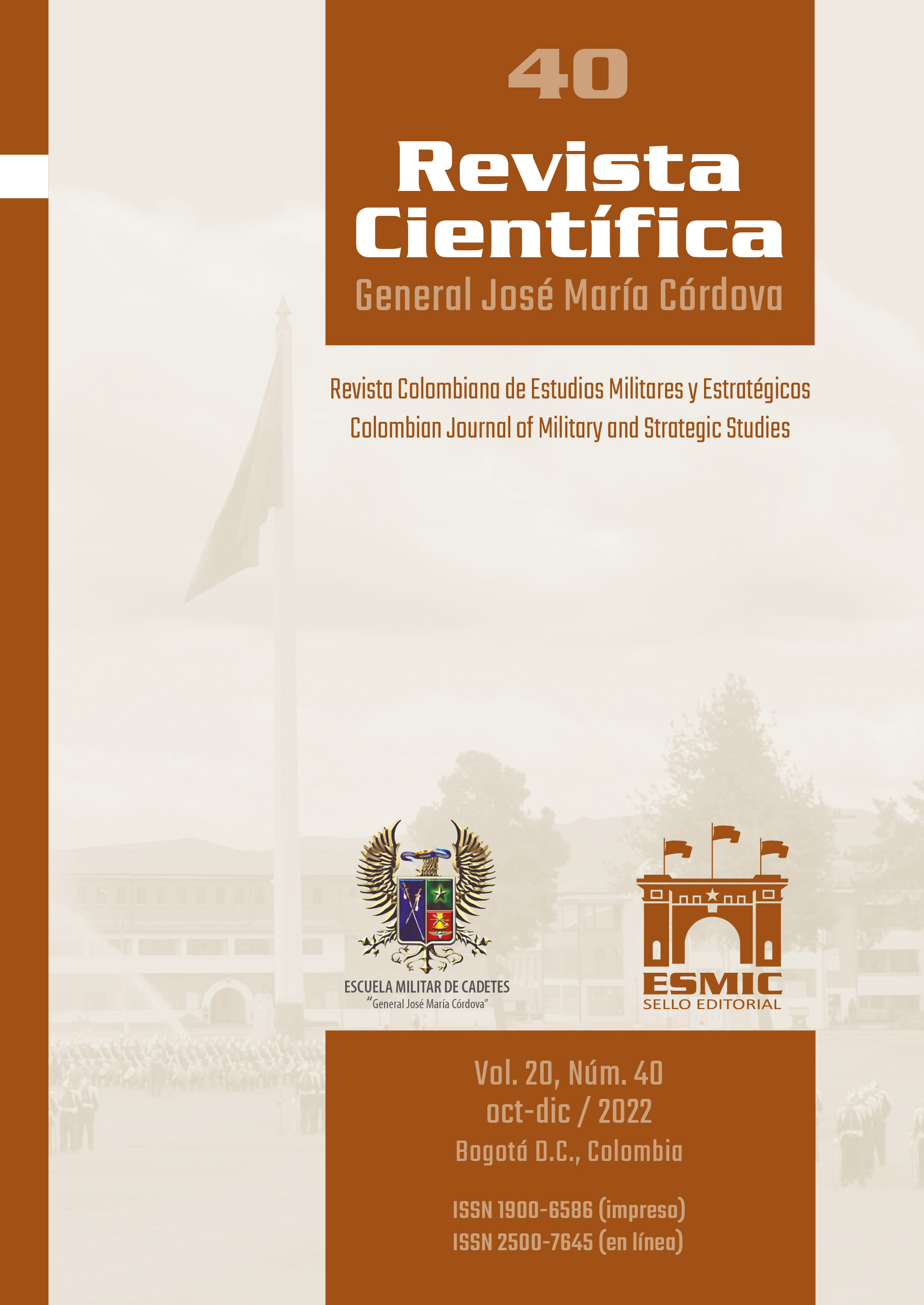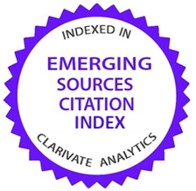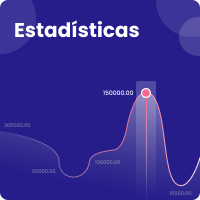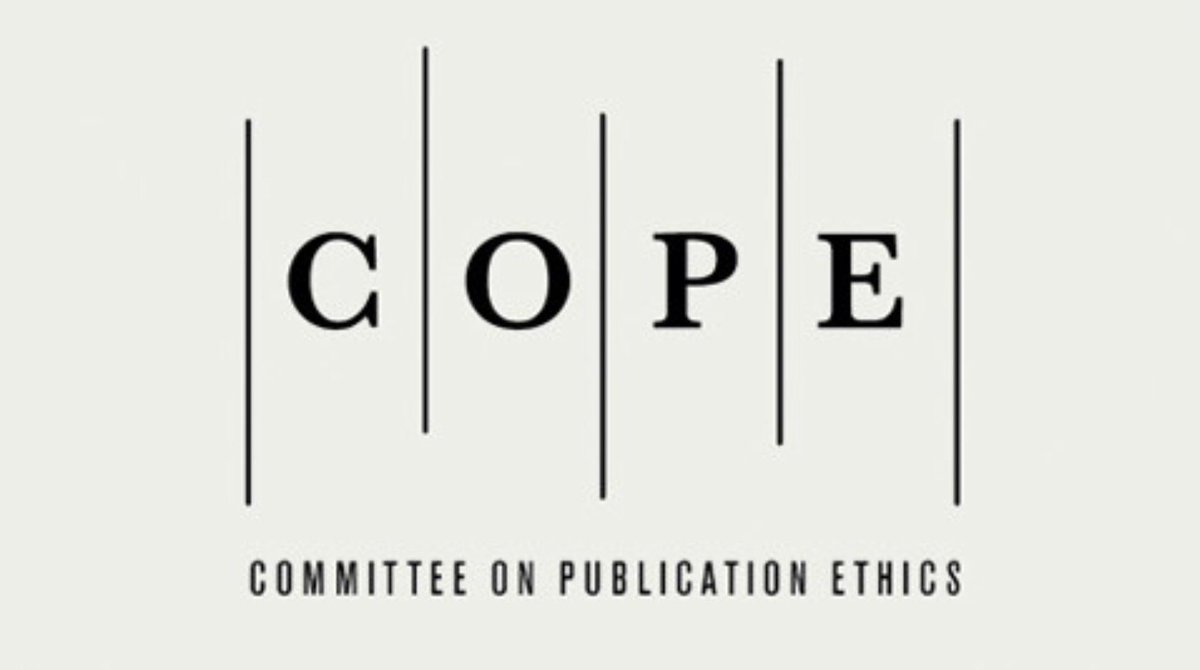Prospectiva de ciberseguridad nacional para Colombia a 2030
DOI:
https://doi.org/10.21830/19006586.866Palabras clave:
cibernética, gobierno electrónico, prospectiva, protección de datos, seguridadResumen
Este artículo presenta un ejercicio prospectivo sobre la ciberseguridad nacional de Colombia a 2030, con base en la revisión de fuentes académicas, reportes internacionales y entrevistas con especialistas. Los resultados se agrupan en seis factores siguiendo el marco Pestel: político, económico, social, tecnológico, ecológico y legal, con el fin de ofrecer un panorama integrado útil para comprender y asumir el reto de la protección del Estado y la resiliencia de las organizaciones frente a las dinámicas internacionales de la transformación digital y una sociedad cada vez más presente en el ciberespacio. Este artículo aspira a motivar nuevas investigaciones desde esta prospectiva y apoyar la toma de decisiones frente a las realidades emergentes que hoy ya hacen parte de un entorno cada vez más incierto, complejo y volátil.
Descargas
Referencias bibliográficas
Ahmad, R., Yunos, Z., Sahib, S., & Yusoff, M. (2012). Perception on cyber terrorism: A focus group discussion approach. Journal of Information Security, 3(3). https://doi.org/10.4236/jis.2012.33029
Alcolea, D. (2012). Las nuevas estrategias de defensa nacional (Documento de Opinión n.º 68). Instituto Español de Estudios Estratégicos. https://bit.ly/3twS5PU
Boney, B., Hayslip, G., & Stamper, M. (2018). CISO Desk Reference Guide. A practical guide for CISOs (vol. 2). CISO DTG Joint Venture Publishing.
Boyes, H. (2015). Cybersecurity and cyber-resilient supply chains. Technology Innovation Management Review, 5(4), 28-34. http://timreview.ca/article/888
Buchanan, B. (2020). The hacker and the state. Cyber attacks and the new normal of geopolitics. Harvard University Press.
Campaña Defender la Libertad. (2021, 9 de mayo). Fiscalía y Procuraduría deben investigar discursos de odio que han instigado los atentados sicariales en contra de las manifestantes del Paro Nacional. https://bit.ly/3is8sqp
Cano, J., & Marroquín, J. (2021). Responsabilidad digital corporativa: una revisión sistemática. ISLA 2021 Proceedings 6. https://aisel.aisnet.org/isla2021/6
Cano, J. (2018). Repensando los fundamentos de la gestión de riesgos. Una propuesta conceptual desde la incertidumbre y la complejidad. Revista Ibérica de Tecnología y Sistemas de la Información, E15(4), 76-87. https://bit.ly/3JAdD3q
Cano, J. (2019). Ciberriesgo. Aprendizaje de un riesgo sistémico, emergente y disruptivo. Revista Sistemas, 151, 63-73. https://doi.org/10.29236/sistemas.n151a5
Cano, J. (2021). Ciberseguridad empresarial. Reflexiones y retos para los ejecutivos del siglo XXI. Lemoine Editores.
Choucri, N. (2012). Cyberpolitics in international relations. The MIT Press.
Dash, P., Karimibiuki, M., & Pattabiraman, K. (2021). Stealthy attacks against robotic vehicles protected by control-based intrusion detection techniques. Digital Threats: Research and Practice, 2(1), 1-25. https://doi.org/10.1145/3419474
Daswani, N. (2021, 15 de enero). Understanding third-party hacks in the aftermath of the SolarWinds breach. Helpnet Security. https://bit.ly/3ws2VbK
Deloitte Development. (2019). The future of cyber survey 2019. Cyber everywhere. Succeed anywhere. https://bit.ly/3Jv44mh
Donaldson, S., Siegel, S., Williams, C., & Aslam, A. (2015). Enterprise cybersecurity. How to build a successful cyberdefense program against advanced threats. Apress.
Douzet, F. (2014). Understanding cyberspace with geopolitics. Hérodote, 1-2(152-153), 3-21. https://doi.org/10.3917/her.152.0003
Dupuy, A., Nussbaum, D., Butrimas, V., & Granitsas, A. (2021, 13 de enero). Energy security in the era of hybrid warfare. NATO Review. https://bit.ly/3KVxgDw
El Tiempo. (28 de mayo de 2021). Las noticias falsas que no debe creer en medio del paro. https://bit.ly/3tvfX6s
Fergnani, A., Hines, A., Lanteri, A., & Esposito, M. (2020, 25 de septiembre). Corporate foresight in an ever-turbulent era. European Business Review. https://bit.ly/37Ka78F
Ganghi, R., Sharma, A., Mahoney, W., Sousan, W., Zhu, Q., & Laplante, P. (2011). Dimension of cyber-attacks. Social, political, economic, and cultural. IEEE Technology and Society Magazine, 30(1), 28-38. https://doi.org/10.1109/MTS.2011.940293
Hepfer, M., & Powell, T. (2020). Make cybersecurity a strategic asset. MIT Sloan Management Review, 62(1), 40-45. https://bit.ly/36l6c1Y
Hines, A., & Bishop, P. (2015). Thinking about the future. Guidelines for strategic foresight. Formating Experts.
Hoffman, W., & Levite, A. (2017). Private sector cyber defense: Can active measures help stabilize cyberspace? Carnegie Endowment for International Peace. https://bit.ly/3JFa1NH
Infobae. (2021, 21 de enero). Gobierno dice que ciberataque a páginas de la Presidencia de Colombia se hizo desde Rusia y Ucrania. https://bit.ly/3Nby498
Infobae. (2021, 8 de octubre). Estos son los ciberdelitos más comunes en Colombia, según la Policía Nacional. https://bit.ly/3L63Y4Y
Jordán, J. (2018). El conflicto internacional en la zona gris: una propuesta teórica desde la perspectiva del realismo ofensivo. Revista Española de Ciencia Política, 48, 129-151. https://doi.org/10.21308/recp.48.05
Jordán, J. (2021). Disuasión en la zona gris: una valoración exploratoria aplicada a Ceuta y Melilla (Global Strategy Report 28). Global Strategy. https://bit.ly/3L9sjqK
Lonergan, S. (2017). Cyber power and the international system (tesis doctoral, Graduate School of Arts and Sciences, Columbia University). Columbia Academic Commons. https://doi.org/10.7916/D88D07PH
Maurer, T. (2018). Cyber mercenaries. The state, hackers, and power. Cambridge University Press
McKinsey & Company. (2021). The top trends in tech. Executive summary download. https://mck.co/3uszuDC
McNulty, E. (2021, 7 de enero). To see the future more clearly, find your blind spots. Strategy+Business. https://bit.ly/3qzwrsd
Meza, A. (2021, 10 de febrero). Cuatro grandes mentiras sobre las vacunas contra el Covid-19. Revista Digital. France24. https://bit.ly/3IzJMqD
Nogueira, R. (2020, 21 de diciembre). Reducir el CO2 a golpe de clic. Ethic. https://bit.ly/356Nydm
Noticias Caracol. (2021, 11 de julio). La historia secreta del hackeo más grave contra las Fuerzas Militares de Colombia. https://bit.ly/3wwpN9U
Oliver, R. (2020, 13 de febrero). Bitcoins, el ‘supervillano’ virtual del medio ambiente. Ethic. https://bit.ly/3tBqVHv
Ospina-Valencia, J. (2021, 6 de mayo). Protesta popular en Colombia: ¿guerra de imágenes falsas en redes sociales o realidad inimaginada en las calles? DW. https://bit.ly/3qzkvql
Portafolio. (2021, 20 de septiembre). Por ahora, refugiados afganos no llegarán a Colombia. https://bit.ly/3ICnzbp
Pricewaterhouse Coopers (PwC). (2020). Global Digital Trust Insights Survey 2021. Cybersecurity comes of age (Global Report). https://pwc.to/3iLzs4f
Raban, Y. & Hauptman, A. (2018). Foresight of cyber security threat drivers and affecting technologies. Foresight, 20(4), 353-363. https://doi.org/10.1108/FS-02-2018-0020
Riquelme, R. (2020, 3 de febrero). Conoce a los robots con inteligencia artificial. El Economista. https://bit.ly/374aXgo
Rowe, N. (2015). The attribution of cyberwarfare. En Green, J. (Ed.), Cyber warfare. A multidisciplinary analysis. Routledge.
Saha, B. (2018). Green computing: current research trends. International Journal of Computer Sciences and Engineering, 6(3), 467-469. https://doi.org/10.26438/ijcse/v6i3.467469
Semana. (2021, 19 de octubre). Imitando la voz del gerente con computadora, ladrones hurtan más de 35 millones de dólares a un banco. https://bit.ly/3tPlJ2F
Shiroishi, Y., Uchiyama, K., & Suzuki, N. (2018). Society 5.0: for human security and well-being. IEEE Computer, 51(7), 51-55. https://doi.org/10.1109/MC.2018.3011041
Singer, P. W., & Brooking, E. (2018). LikeWar. The weaponization of social media. Houghton Mifflin Harcourt Publishing Company.
Skopik, F., & Pahi, T. (2020). Under false flag: using technical artifacts for cyber attack attribution. Cybersecurity, 3(8). https://doi.org/10.1186/s42400-020-00048-4
Soler, E. (2019). El mundo en 2020: diez temas que marcarán la agenda global (CIDOB Notes 220). https://bit.ly/3K58YGU
Téllez, F. (2016). Prefijo CIBER: arqueología de su presencia en la sociedad del conocimiento. Investigación y Desarrollo, 24(1), 142-162. https://dx.doi.org/10.14482/indes.24.1.8688
Torres, M. (2020). Desde Venezuela se manipularon marchas en Colombia para generar violencia: John Müller. La FM. https://bit.ly/3iLzIQK
Wade, M. (2020, 28 de abril). Corporate responsibility in the digital era. Sloan Management Review. https://bit.ly/3DqpChH
Wolfowitz, P., Rivera, K., & Ware, G. (2018, 9 de octubre). Planning for the unexpected. Strategy+Business. https://bit.ly/2WKbsVJ
World Economic Forum (WEF). (2020). COVID-19 Risks Outlook. A preliminary mapping and its implications (Insight Report). https://bit.ly/3qJGaMQ
Xiao, C., Li, B., Zhu, J., He, W., Liu, M., & Song, D. (2018). Generating adversarial examples with adversarial networks. En Proceedings of the Twenty-Seventh International Joint Conference on Artificial Intelligence (IJCAI-18, pp. 3905-3911). https://doi.org/10.24963/ijcai.2018/543
Yannakogeorgos, P. (2014). Rethinking the threat of cyberterrorism. En T. Chen, L. Jarvis, & S. Macdonald (Eds.), Cyberterrorism. Understanding, assessment, and response (pp. 43-62). Springer Verlag. https://doi.org/10.1007/978-1-4939-0962-9_3
Descargas
Publicado
Cómo citar
Número
Sección
Licencia
Derechos de autor 2022 Revista Científica General José María Córdova

Esta obra está bajo una licencia internacional Creative Commons Atribución-NoComercial-SinDerivadas 4.0.
| Estadísticas de artículo | |
|---|---|
| Vistas de resúmenes | |
| Vistas de PDF | |
| Descargas de PDF | |
| Vistas de HTML | |
| Otras vistas | |

























